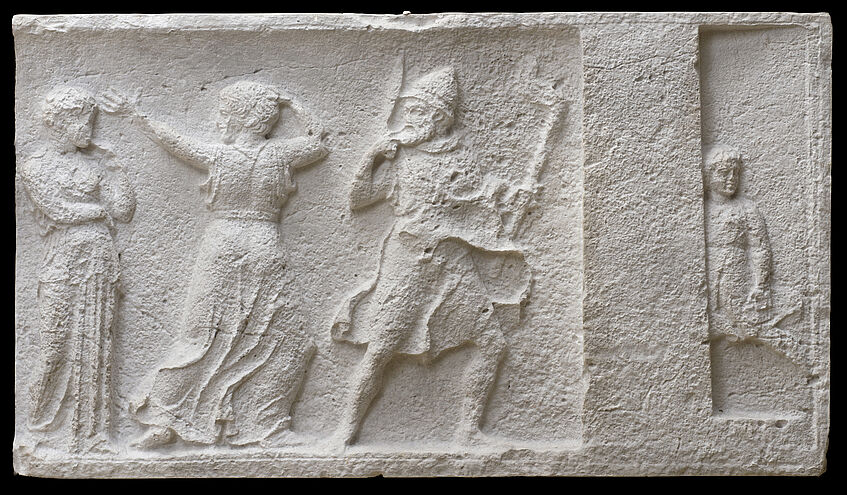Tour B: Childhood in Antiquity
What role did children play in ancient societies? How did their world relate to that of adults? And how were children – in their physical development and at different ages – depicted in ancient artworks? The tour sets out in search of ancient realities and representations of childhood.
B7 Child Labour

[IKA, Photo: Kristina Klein]
Inv.-Nr. 115c.2
Freiermord des Odysseus aus dem Südfries des Heroons von Trysa
Wien, Kunsthistorisches Museum I 481
410/400 oder um 380 v. Chr.
This scene from a monumental tomb in Lykia (Turkey) shows the hero Odysseus killing the suitors, with his teenage son Telemachus as his side. But at the edge of the frame is a child, looking on at the slaughter. Who is this child, and what are they doing in this scene?
It seems likely that this figure represents a child slave, who would have worked in Odysseys’ palace on Ithaka. The Odyssey furnishes us with an example of one such child slave on Ithaka – the swineherd Eumaeus, who unwittingly gives the disguised Odysseus food and shelter when he first arrived back on the island. Although Eumaeus was born into a kingly family on the island of Syria, he was stolen by pirates as a child and sold into slavery, so that when we meet him in the Odyssey, he is looking after the royal pigs on the rocky shores of Ithaka (Odyssey 15.402-484).
Although the idea of child slavery might seem shocking to us, in antiquity it was normal. In ancient Greek, the word for ‘child’ was the same as one of the words commonly used for ‘slave’ – pais. Behind this lay the idea that neither children nor slaves were fully human, in that they were not accorded the rights and privileges of adult citizens.
